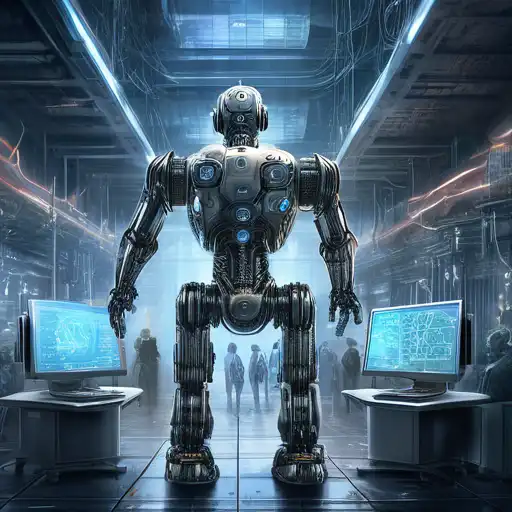Understanding AI and Machine Learning
In the realm of technology, Artificial Intelligence (AI) and Machine Learning (ML) are two of the most talked-about topics. While they are often used interchangeably, they represent distinct concepts with unique applications and implications. This article delves into a comparative study of AI and ML, shedding light on their differences, similarities, and how they are shaping the future of technology.
What is Artificial Intelligence?
AI refers to the simulation of human intelligence in machines that are programmed to think like humans and mimic their actions. The goal of AI is to create systems capable of performing tasks that would normally require human intelligence, such as visual perception, speech recognition, decision-making, and language translation.
What is Machine Learning?
Machine Learning, a subset of AI, focuses on the development of computer programs that can access data and use it to learn for themselves. The primary aim is to allow computers to learn automatically without human intervention or assistance and adjust actions accordingly.
Key Differences Between AI and Machine Learning
While AI and ML are closely related, there are key differences that set them apart:
- Scope: AI has a broader scope than ML. AI is about creating intelligent machines that can simulate human thinking capability and behavior, whereas ML is about machines learning from data.
- Goals: AI aims to create systems that can solve complex problems like humans do, while ML aims to create systems that can learn from data to maximize the performance of a task.
- Applications: AI is used in a wide range of applications, from robotics to natural language processing. ML is primarily used in data analysis, predictive modeling, and pattern recognition.
How AI and Machine Learning Work Together
Despite their differences, AI and ML complement each other in many ways. ML is often the driving force behind many AI applications, providing the algorithms that allow AI systems to learn from and make decisions based on data. Together, they are powering innovations across industries, from healthcare to finance.
Examples of AI and ML in Action
Here are some examples of how AI and ML are being used today:
- Healthcare: AI and ML are used for disease prediction, personalized medicine, and robotic surgeries.
- Finance: They are employed in fraud detection, algorithmic trading, and customer service automation.
- Retail: AI and ML enhance customer experiences through personalized recommendations and inventory management.
The Future of AI and Machine Learning
The future of AI and ML is incredibly promising, with advancements in technology paving the way for more sophisticated and intelligent systems. As these technologies continue to evolve, they will play an even greater role in solving complex problems and improving our daily lives.
For those interested in diving deeper into the world of AI and ML, exploring data science and emerging tech trends can provide valuable insights into how these fields are developing.
In conclusion, while AI and Machine Learning are distinct fields, their intersection is driving innovation across the globe. Understanding their differences and how they complement each other is key to grasping the future of technology.
